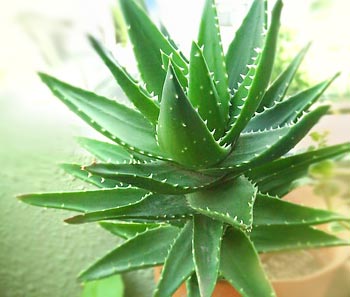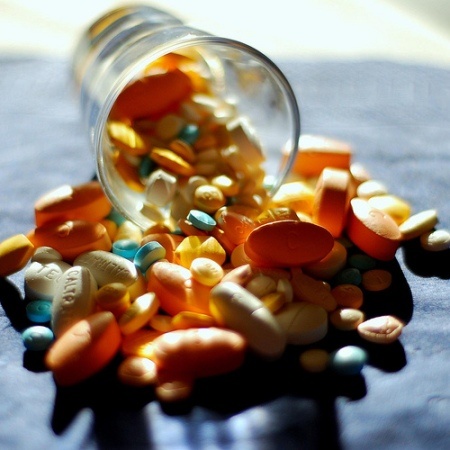английский за проф направлением. Укладач Триполець В.І. Рецензенти
 Скачать 4.04 Mb. Скачать 4.04 Mb.
|
|
IV. Speaking. Read and translate the following proverb. Do you agree with its meaning? Comment your point of view. The remedy may be worse than the disease. Notes: remedy — лікування V. Supplement. Text I 1. Read, translate and discuss the following text. Be ready to speak about the effectiveness and medicinal uses of licorice. LICORICE The Romans called it Radix dulcis, meaning "sweet root". The Germans called it "sweet wood". The armies of Alexander carried it to allay thirst, the Sioux in North America chewed it for toothache, and medieval1 English governments taxed it. Licorice has been used in many ways by many cultures. Licorice is cultivated for its sweetness and medicinal properties. The roots are harvested at the end of the fourth year, when the sweet taste is the strongest. As many as 20 known species2 are native to South Asia, Europe, and North America. Glycyrrhiza uralensis and G. glabra most frequently used medicinally. Licorice root has a variety of medicinal uses, and has been traditionally classed as anti-inflammatory, adrenal tonic, antiallergy, antimicrobial, cough-reducer, expectorant3, and mild laxative. It has been extensively investigated, and many of its traditional uses have been verified through clinical trials. Licorice is widely used for upper respiratory problems: sore throats, bronchitis, coughs, and excess catarrh. It soothes and reduces coughing, while its antiviral action is excellent for mouth ulcers and cold sores. The sweet taste makes licorice a popular addition to cough syrups and lozenges4. The healing effects of licorice make this herb a remedy for gastritis, peptic ulcer, and abdominal cramping. Some studies suggest that licorice can increase gastric juices by as much as 25 percent without altering the natural pH of the stomach, making licorice important for proper digestion. Chemicals in licorice are metabolized by the body into molecules having a similar structure to some adrenal hormones. One of these hormones, Cortisol, may be the basis of the antiinflammatory effect of licorice. The herb is often added to formulas for chronic inflammatory conditions such as arthritic and rheumatic complaints. Like all strong herbs, licorice must be treated with respect, and seeking the advice of a qualified natural health practitioner is recommended. While considered safe in low doses, adverse effects are common if you take more than 20 g of the root per day. Susceptible individuals may experience side effects at much lower doses. Possible adverse effects include increased blood pressure, water retention, headaches, dizziness, and irregular heartbeat. The safety of licorice in pregnancy has not been established, and it should be avoided in any dose over 3 g a day. Do not take licorice if you have an existing high blood pressure or heart condition, or if you are taking medications for high blood pressure or heart problems. Also avoid licorice if you are taking diuretics or using potassium supplements. Licorice has been reported to have negative effects on estrogen-sensitive conditions, on thyroid hormone production, and it should not be combined with prescription corticosteroids. As one of our most versatile5 and effective herbs, licorice has proven its worth throughout history. Notes 1medieval — середньовічний 2species — рід, вид 3expectorant — відхаркувальний засіб 4lozenges — таблетки від кашлю 5versatile — універсальний 2. Form word combinations.
3. Answer the following questions.
4. Are the following sentences true or false? Correct the false ones.
5. Read and memorize the licorice tea recipe. Drink and be healthy. Use the whole root of licorice to make a tea by steeping 1/2 tsp (2 g) dried root in 1 cup (250 ml) boiling water, or take 1/4to 3/4 tsp (1 to 3 ml) tincture (1:5 ratio of dried herb to 45 percent alcohol extract). Take this tea three times a day, for a maximum of four to six weeks. Text 2 1. Read, translate and retell the following text: ALOE VERA Aloe vera is a species of the Aloeplant at is native to northern Africa. Although used topically to treat burns, aloe vera also provides natural support for the immune system. Aloe vera has been found to be a concentrated plant source of health-supporting polysaccharides — the beta-glucomannans, a class of long-chain sugars. Clinical studieshave found these polysaccharides directly affect cells in the immune system. Fresh aloe vera contains many other constituents, including vitamins, minerals, amino acids, essential fatty acids, a natura1 form of salicylic acid, and plant sterols (with antiseptic, anti-inflammatory, and analgesic properties). Aloe vera also contains trace amounts of vitamin B]2 and is one of the rare plant sources for this nutrient.  In fact, aloe vera has several medicinal purposes. Its leaves can be split to get out it the juice to rub on the skin to treat sunburns, wounds, insect bites, wrinkles, scratches, and skin irritations. A tea made from its dried juice serves to be a good wash to wounds and the eyes. According to a study in Europe, it can also reduce the blood sugar levels in people with diabetes. It also treats asthma, stomach ache, fever, and headache. Topical application of aloe vera may be effective for genital herpes and psoriasis. Aloe vera extracts have antibacterial and antifungal activities. So aloe is used externally for the treatment of: - skin irritation;
And aloe is used internally to combat most digestive problems, including:
This herb is one of the main attractions of the pharmaceutical and cosmetic industries and also the most widely used ingredient — starting from vitamins and laxatives to face creams and body care lotions. Owing to its properties, aloe vera was incorporated in the composition of deodorants. A wide variety of products with curative and therapeutic effects is obtained from aloe vera, one of the most effective herbs. 2. Answer the following questions.
10. What can you say about the effectiveness of aloe? 3. Complete the sentences:
29. Drugs Ліки І. Lead-in 1. Read the words, then match them to the meaning of their prefixes from the list below:
Antibiotic, subculture, anticancer, contradiction, antidote, subgroup, antihistamine, subdivision, antitoxin, contraposition, antiseptic, substernal, antiparticle, antisocial, subconscious, contraindication, contraception, subspecies, contraceptive, subnormal, contradistinction, antibody, substructure. 2. Learn the following words. to synthesize – синтезувати; to dispense - виготовляти, відпускати (ліки); to exert - впливати на; to destroy – руйнувати; removal – видалення; interaction – взаємодія; subdivision – підрозділ; harmful – шкідливий; chemotherapy - хімічна терапія; idiosyncrasy - ідіосинкразія, гіперчутливість до чогось, алергія; predictable – передбачуваний; to require – потребувати; antidote – протиотрута; caution - увага, застереження; to eliminate – усувати; alopecia - алопеція, облисіння; complication – ускладнення; jaundice – жовтяниця. 3. Match the definition with its term.
4. Translate into Ukrainian.
II. Reading Drugs Drugs are chemical substances used in medicine in the treatment of diseases. These chemical substances can come from many different sources. Drugs are obtained from various parts of plants, such as the roots, leaves, and fruit. Examples of such drugs are digitalis (from the foxglove plant), and antibiotics such as penicillin and streptomycin (from plants called molds). Drugs can also be obtained from animals; for example, hormones are secretions from the glands of animals. Drugs can be made from chemical substances which are synthesized in the laboratory. Anticancer drugs, such as methotrexate and prednisone, are examples of laboratory-synthesized drugs. Some drugs are contained in food substances; these drugs are called vitamins. Drugs are dispensed and stored in an area known as a pharmacy. The field of medicine which studies drugs, their nature, origin, and effect in the body is called pharmacology. Pharmacology is a large medical specialty and contains many subdivisions of study, including pharmacodynamics, molecular pharmacology, clinical pharmacology, pharmacogenetics, chemotherapy, toxicology and others.  Pharmacodynamics involves the study of how drugs exert their effects in the body. Scientists interested in pharmacodymanics study the processes of drug absorption (how drugs pass into the bloodstream), metabolism (changes drugs undergo within the body) and excretion (removal of the drug from the body). Molecular pharmacology concerns the study of the interaction of drugs and cells or subcellular entities, such as DNA, RNA, or enzymes. These studies provide important information about the mechanism of action of the drug. Clinical pharmacology is a medical field of medication effect on humans. Pharmacogenetics deals with clinical testing of genetic variation that gives rise to different responses to drugs. Chemotherapy is the subdivision of pharmacology, which studies drugs that are capable of destroying microorganisms, parasites, and cells within the body without destroying the body itself. Chemotherapy includes treatment of infectious diseases, mental illnesses, and cancer. Toxicology is the study of harmful chemicals and their dangerous effects on the body. Toxicology includes the study of the potentially harmful effects of any drug on the body; any drug, if given in high enough doses, can have harmful actions on the body. Toxicological studies in animals are required by law before new drugs can be tested in individuals. A toxicologist is also interested in finding proper antidotes to these harmful effects. Antidotes are substances given to neutralize unwanted effects of drugs. Drug toxicity refers to the poisonous and potentially dangerous effects of some drugs. Idiosyncrasy is an example of an unpredictable type of drug toxicity. Other types of drug toxicity are more predictable and based on the dosage of the drug given. If the dosage of certain drugs is increased, unfavorable effects may be produced. Physicians are trained to be aware of the potential toxic effects of all drugs they prescribe and must be cautious with their use. Side effects are toxic effects which routinely result from the use of a drug. They often occur with the usual therapeutic dosage of a drug and are usually tolerable. For example, nausea, vomiting, and alopecia are common side effects of the chemotherapeutic drugs used to treat cancer. Contraindications are the factors in the patient's condition which make the use of a drug dangerous. Among the most dangerous toxic complications of drug usage are blood dyscrasias (blood diseases) such as aplastic anemia and leukopenia, cataract formation (eye disorder), cholestatic jaundice (biliary obstruction leading to yellow discoloration of skin), neuropathy, collagen disorders (connective tissue damage such as arthritis), and photosensitivity (abnormal sensitivity to light). |
